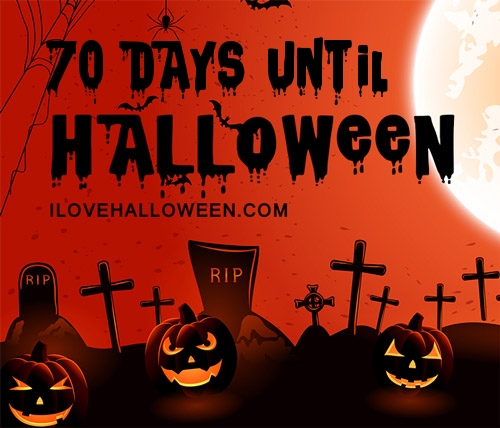Dracula (1931)
Starring: Bela Lugosi, Dwight Frye, Helen Chandler, Edward Van Sloan, Herbert Bunston, David Manners, and Charles K. Gerrard
Director: Tod Browning
Rating: Seven of Ten Stars
Count Dracula (Lugosi) travels to England where he sates his bloodlust on young women, including the lovely Mina (Chandler).
Universal's 1931 "Dracula" was the first horror talkie and is one of the three most influential horror films ever made. It's a film that's truly a significant milestone not only in film history, but in pop culture as well, and, even though its age is showing, it's a genuiine classic.

I don't think anything quite as subtly creepy and startling as Dracula passing through a mass of cobwebs without breaking them has ever been put on film. It's a perfect film moment, because the feeling of "waitaminnit... did that just happen?" that Renfield (Frye) has is shared by the audience, and we're sitting there with a chill that goes right down to our very bones.
Because this film is such a classic milestone, I feel a bit awkward about not liking it more than I do. Like "Frankenstein" (also made by Universal in 1931), this movie has nearly as many flaws as it has elements of perfection.
The biggest problem with "Dracula" is the haphazard way the film unfolds, particuarly in its second half. The vampiric Lucy and her preying on little children is dealt with a throw-away fashion, and the climactic encounter at Carfax Abby, which is so weakly and disjointedly handled that it is barely a climax at all. (It's particuarly dissapointing that Dracula's death happens entirely off-screen, except for a very effective reaction from the psychically bonded Mina.)
In fact, in many ways, it's almost as if someone forgot the movie needed a script, and it was made up as the crew went along. The film is worth seeing for spectacular performances from Bela Lugosi (it's easy to see why he solidified vampires as suave, sharp-dresserrs as opposed to fugly scarecrows like the one featured in "Nosferatu"), Dwight Frye (who, as Renfield, is as much a star of the film as Lugosi, and who does some great acting when he vascilates from raving madman to apparently sane and back again), and Helen Chandler (who, as Mina, conveys more with her eyes, body language, and facial expressions than one would thinks possible, and who has the only decent moment during the film's climax as she shares in Dracula's pain as Van Helsin stakes him). The film's impressive sets and creative camera work also bring about some genuinely creepy moments, such as when Dracula and his vampire brides emerge from their coffins under his Transylvanian castle, and then when they later close on an unconcious Renfield; the discovery of Renfield in the hold of the death ship after it runs aground; Dracula's feeding upon the flower girl in London; Renfield crawling across the floor toward an unconcious maid with a look of madness and bloodlust on his face; Mina's transformation as she urges John Harker to get rid of Van Helsing and his cruxifixes; and Dracula and Mina's arrival at Carfax Abby.
But, for every great moment or spectacular performance, there's a boring one, or one where opportunities that should have been obvious to filmmakes even in 1931 are completely missed. Edward Van Sloan (as Van Helsing) and David Manners (as a particularly milquetoasty Harker) are completely dead spots in the film, giving weak performances that almost manage to drag down those excellent ones from Chandler, Frye, and Lugosi. (In fact, Van Sloan and Manners are so weak here that it's surprising to me that they;'re the same actors who do so well in "The Mummy" just one years later. (Perhaps the better script and a different director made all the difference for them.)
By the way, the new score that Phillip Glass composed for the restored version of the film included in the "Dracula Legacy Collection" (and which can be toggled on and off) is actually a fine reflection of the movie itself: Glass has some good moments and some supremely weak moments in his score. For the most part, it is just muazak that doesn't seem to have a whole lot to do with enhancing the mood on the scrreen, but every so often, it is spot-on and it makes the film that much more impressive. (Glass's music ALMOST gives the film's climax some impact, for example.)
Although far from perfect, the 1931 "Dracula" is a must-see for anyone with an interest in examining the origins of horror as a seperate and unique genre. While I'll take "White Zombie" or "The Mummy" over this film any day, I think the 75 minutes it takes to watch this film, is time well spent.
White Zombie (1932)
Starring: Bela Lugosi, Madge Bellamy, Robert Frazer, John Harron, and Joseph Cawthorn
Director: Victor Halperin
Rating: Nine of Ten Stars
When Haitian plantation owner Charles Beaumont (Frazer) becomes obsessed with the beautiful Madeleine (Bellamy), he invites her and her husband-to-be (Harron) to have their marriage and spend their honeymoon at his plantation. When he fails to win Madeleine's heart, he turns to his neighbor, 'Murder' Legendre (Lugosi) and asks him to use his powers to create zombies to recreate Madeleine as his love slave. Will Madeleine's fiance and the local priest (Cawthorn) unmask Legendre's evil and save Madeleine from a fate worse than death, or will they merely become yet another pair of zombies in Legendre's growing force of mindless slaves?
"White Zombie" has been described as the first zombie movie ever made. I don't know if this is true or not, but it is definately one of the best. It predates the flesh-eating blood-spattered cannibal zombies of George Romero, but instead relies upon traditional zombie myths and tales of dark sorcery to generate its chills. It's a stylishly filmed movie that features creepy performances by Lugosi and Bellamy, and scenes that drip with creepiness, as Legendre's mindless slaves work his sugar mills, and as a ghostly, zombie-fied Madeleine glides silently through the vaulted halls of Legendre' house. (The height of creepiness is reached when the depth of Legendre's evil is fully revealed and he gradually starts turning Charles Beaumont into a zombie as well.)
"White Zombie" is a must-see for fans of classic horror movies in general, and fans of zombie movies in particular. It is the one of the roots from which the horror genre sprang. Heck, the film should be required viewing for anyone who is currently making horror movies... if filmmakers chose to emulate a work like this, maybe we'd have more decent horror movies coming out.
For reviews of all the classic vampire films included in "Dracula: The Legacy Collection," visit the Universal Horror Archive by clicking here.


















No comments:
Post a Comment